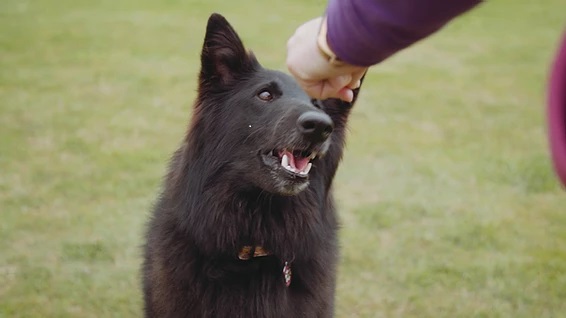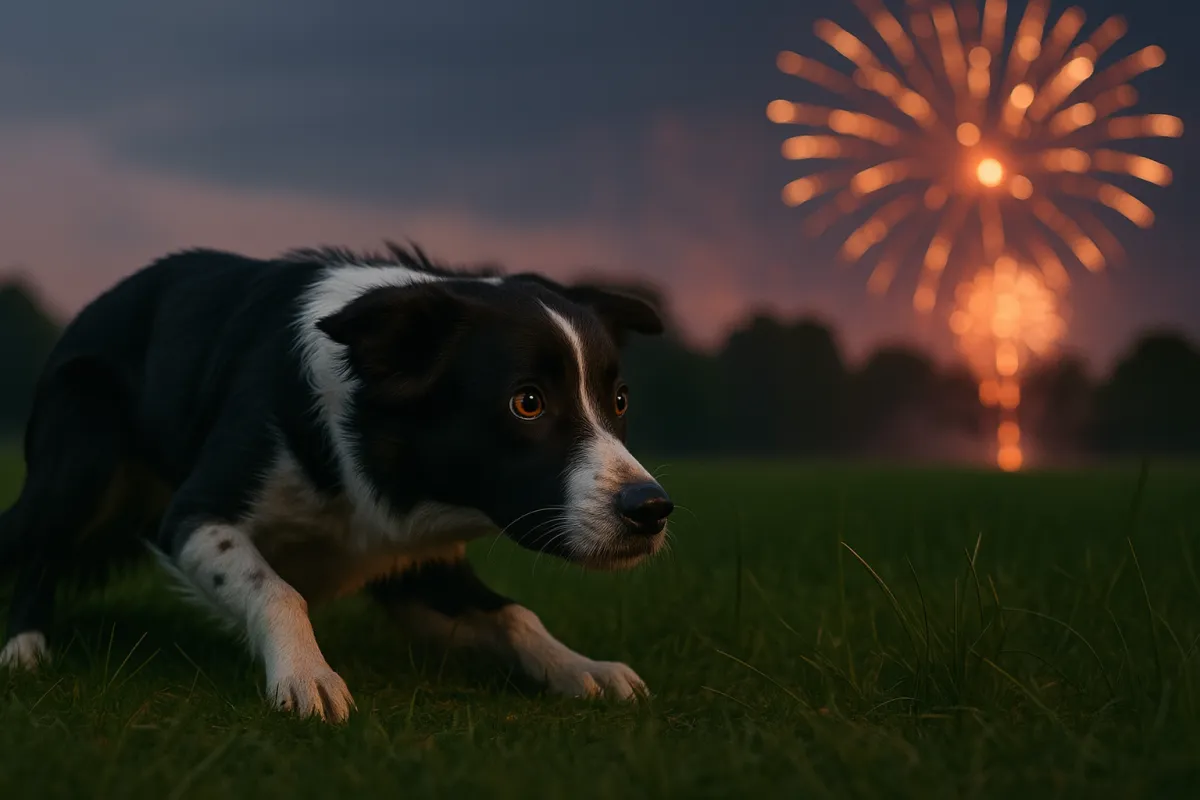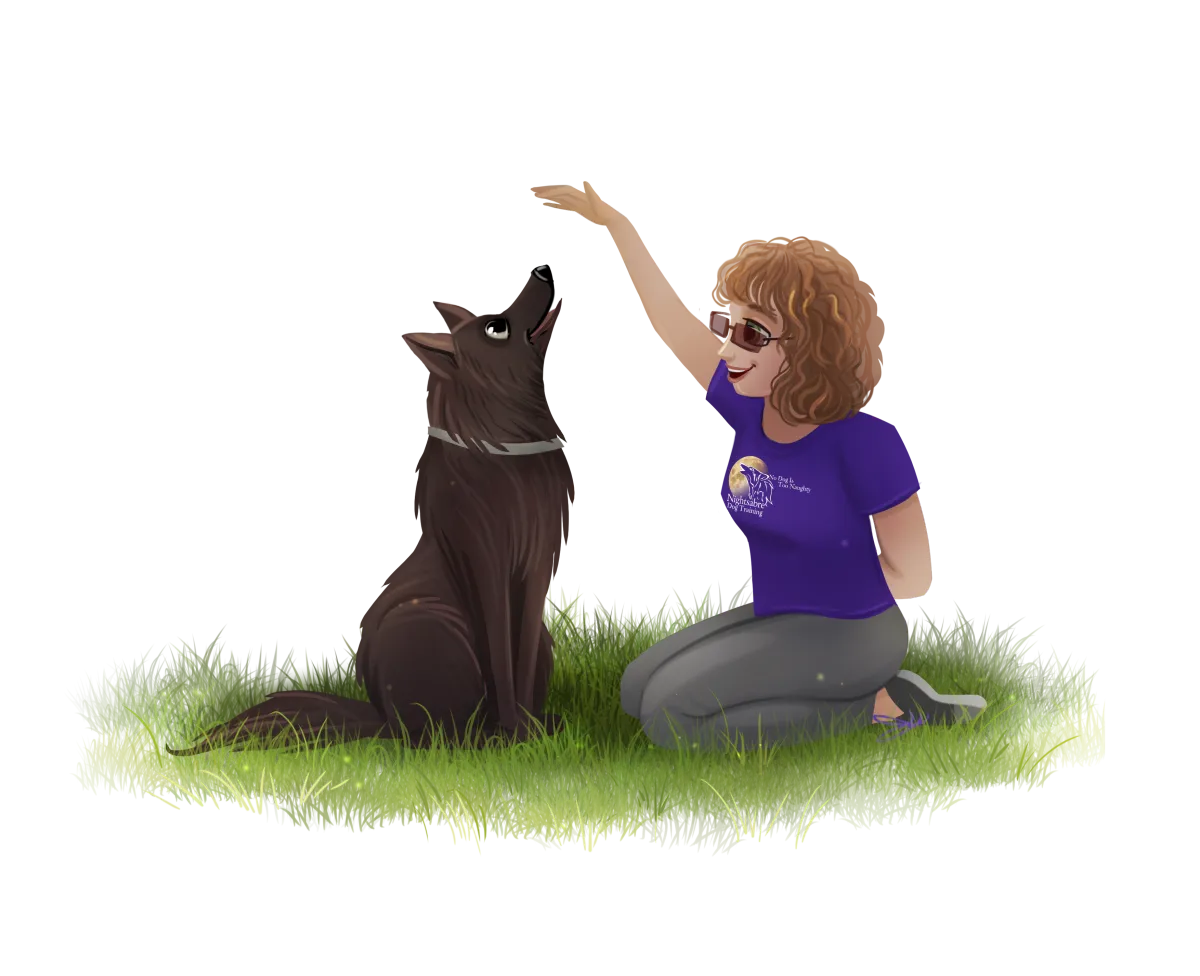The Fastest Way to Train a Dog: Positive Reinforcement Techniques for Success
Discover the fastest way to train your dog using positive reinforcement, with tips for obedience training stubborn breeds and using marker words effectively.
07888 870151

Discover the fastest way to train your dog using positive reinforcement, with tips for obedience training stubborn breeds and using marker words effectively.

Imagine a quiet evening at home: you’re curled up with your favourite book, the kettle’s just boiled, and your dog is dozing peacefully by your feet. Then—CRACK! A sudden bang shatters the calm. Your dog bolts upright, eyes wide, heart racing, and darts under the sofa. Whether it’s fireworks, a gunshot in the distance or unexpected construction noise, these sudden sounds can turn a peaceful night into utter chaos.

In the UK, noise sensitivity affects up to 40% of dogs, making it one of the most common behavioural issues pet parents face. Yet, many owners confuse a normal startle reflex with a deeper, persistent noise phobia. Over time, unaddressed sensitivity can escalate into severe anxiety, escape behaviours and even self-harm. By understanding the root causes, recognising key signs, and applying positive, playful strategies, you can guide your dog from terror to tranquillity.
Noise sensitivity goes beyond a simple flinch. While all dogs can startle at sudden sounds, sensitive dogs experience a learned fear, where every loud noise is perceived as a threat. This conditioned response often manifests as:
Heightened Anticipation: Dogs begin to show anxiety before the noise ever occurs—pacing, panting or seeking refuge.
Intense Panic Attacks: Full-blown fight-or-flight reactions, including frantic barking, trembling and escape attempts.
Generalisation of Fear: Once established, the fear of one noise can spread to others—your dog may react just as badly to a dropped pan as to distant fireworks.
Left unchecked, noise sensitivity can bleed into day-to-day life, turning once-joyful walks or quiet nights in into episodes of dread for both dog and owner.
Several factors contribute to why some dogs develop noise sensitivity while others don’t. Here’s a closer look:
Genetic Predisposition

Certain breeds—such as Border Collies, Labradors, Spaniels and Sheepdogs—show higher incidences of noise fears. Their heightened alertness, originally bred for guarding or herding, can make them more attuned to—and distressed by—sudden sounds.
Missed Critical Socialisation Windows
Puppies have a primary socialisation period between 3–14 weeks of age, during which positive exposure to everyday noises (traffic, vacuum cleaners, children playing) builds resilience. Puppies who spend this window indoors, asleep or away from common household sounds can later perceive them as ominous threats.
Traumatic Noise Exposure
Prolonged or particularly startling noises—like weeks of gas-main repairs, thunderclaps or gunshots—can traumatise even adult dogs. My client’s three-year-old Border Collie was calm around everyday sounds until relentless gas-main works outside her home triggered a severe noise phobia. Now, any sudden bang—whether a rattling trailer or a distant gunshot—sends her into full-blown panic.
Sensitisation Cycles
Fear is self-reinforcing. Each panicked reaction teaches the dog to anticipate danger, making them more anxious before the next noise, and so the cycle intensifies.
Environmental Factors
Urban vs. rural living plays a role, too. Urban dogs might tolerate traffic but panic at fireworks. Rural dogs might never have heard a car horn before it screeches past. Both scenarios can produce acute sensitivity when the unfamiliar occurs.
Understanding these underlying causes helps you tailor an approach that addresses your dog’s unique history and triggers.
Case Study: One of my clients has a three-year-old Border Collie who was utterly calm around everyday sounds—until weeks of gas-main repairs right outside her home. After constant banging, she developed severe noise reactivity. Now, any sudden noise—a distant bang, the rattling of a trailer or the sharp crack of a gunshot—causes her to panic and bolt. In her panic, she often runs towards the car or straight away from her owner, making recall impossible until she’s calm again.
Spotting the early warning signs of noise sensitivity can prevent escalation. Keep an eye out for:
Vocalisation: Barking, howling or frantic whining as sudden noises occur.
Body Language: Trembling, panting, drooling, pinned-back ears, a tucked tail or a lowered head.
Escape Behaviours: Scratching doors, bolting through open gates or racing towards or away from vehicles.
Refusal to Eat or Drink: Anxiety can suppress appetite.
Secondary Stress Responses: House-soiling, obsessive pacing and jumping at shadows even after the noise has stopped.
Early recognition allows you to introduce positive management strategies before the fear becomes entrenched.
Noise sensitivity isn’t merely an inconvenience; it’s a welfare and safety issue:
Health Implications: Chronic stress raises cortisol levels, suppressing immunity and increasing the risk of digestive and cardiovascular problems.
Emotional Toll: Witnessing your dog’s terror can lead to owner guilt, anxiety and strained human–dog bonds. Inconsistent or punitive responses may inadvertently worsen the fear.
Safety Risks: A panicked dog may bolt into traffic, hide in unsafe places or injure themselves trying to escape. Neighbours may complain of incessant barking, causing community friction.
Addressing noise sensitivity early not only improves your dog’s quality of life but also restores your peace of mind and preserves neighbourly harmony.
While professional guidance is essential for severe cases, you can begin nurturing confidence with these core Fun Focus Play principles:
Gradual Desensitisation
Start with recordings of your dog’s specific triggers (fireworks, bangs, rattles) at a volume low enough that your dog notices with curiosity, not panic. Pair each playback immediately with high-value rewards or a brief play session.
Counter-Conditioning Through Play
Transform fear into fun: every time a noise plays, cue a favourite game (tug, fetch) or offer a treasured toy. Your dog learns “bang = brilliant!” over repeated, calm sessions.
Safe-Space Creation
Designate a cosy den—complete with familiar bedding, interactive toys and pheromone diffusers—and encourage voluntary exploration. Your dog chooses to retreat rather than freeze in fear.
Predictable Routines
Consistent feeding, exercise and rest times lower baseline anxiety, making unexpected noises less overwhelming. A well-exercised dog is a more resilient dog.
Professional Oversight
Noise sensitivity is not something that can be addressed in a class situation so I recommend one-to-one sessions. During our one-to-one sessions I monitor stress signals and adjust the pace to your dog’s threshold, ensuring each step builds confidence without overwhelming them.
By blending scientific desensitisation methods with the joy of play, you’ll guide your dog from panic towards playful curiosity—one bang at a time.
Noise sensitivity doesn’t have to rule your dog’s world. With patience, playful exercises and the right guidance, you can turn terror into trust and panic into play. Don’t let sudden bangs, gunshots or rattles dictate your dog’s life—or yours.
Ready to reclaim peace? Book your free 15-minute noise-sensitivity assessment today. Discover how Fun Focus Play can transform fear into confidence, one playful session at a time. Spaces are limited – click here to secure your spot and give your dog the happy, calm life they deserve.

Fun | Focus | Play® by Nightsabre Dog Training
Natasja Lewis DipCAPBT | 07888 870151 | [email protected]
Nightsabre Dog Training © 2023/2024/2025 . Privacy Policy